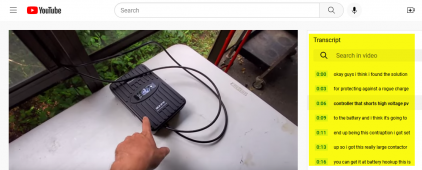Components might vary a lot from a 12v system, up to high voltage system with perhaps hundreds of volts.
That is another advantage, you are not limited to what is commercially available.
Its only really the power components that vary, and maybe the resistors in the potentiometer voltage tweaking part.
The control board will remain pretty much standard.
The two small dc power supplies SM-12 are really the guts out of a standard 12v dc wall pack. These are available on e-bay for about two dollars each.
https://www.ebay.com.au/itm/302088719078
They are specified to supply a fully isolated 12v at 450mA for ac inputs of between 80v and 260v.
If lightly loaded, they work fine from about 30 to 35v dc input up to about 400v dc input.
My system runs at 100v (with thirty lithium cells), so for me it was a good solution.
For lower voltage solar controllers something else might be more appropriate.
Mosfets, diode and heatsink need to be adequately rated, but that should be quite straightforward.
The choke is probably the most difficult thing to nail down, but I am using some old ten amp dimmer chokes I already have, and they work fine.
These are rated at ten amps and 1mH. I might try to source something suitable from China later, but its not something I need myself right now.
But these commercial dimmer chokes are available off the shelf, and seem to work fine.
A very quick internet search turned up this:
https://www.geo-technik.de/en/Remin...-Inductors/Dimmer-Filter-Choke-11A--2025.html
Dimmer chokes for 120v are usually 0.5mH, and dimmer chokes for 230v are usually 1mH. Either should work pretty well for you.
Dimmer chokes are available up to at least fifty amps, but for one series string of panels, ten to twelve amps rating should be fine.





